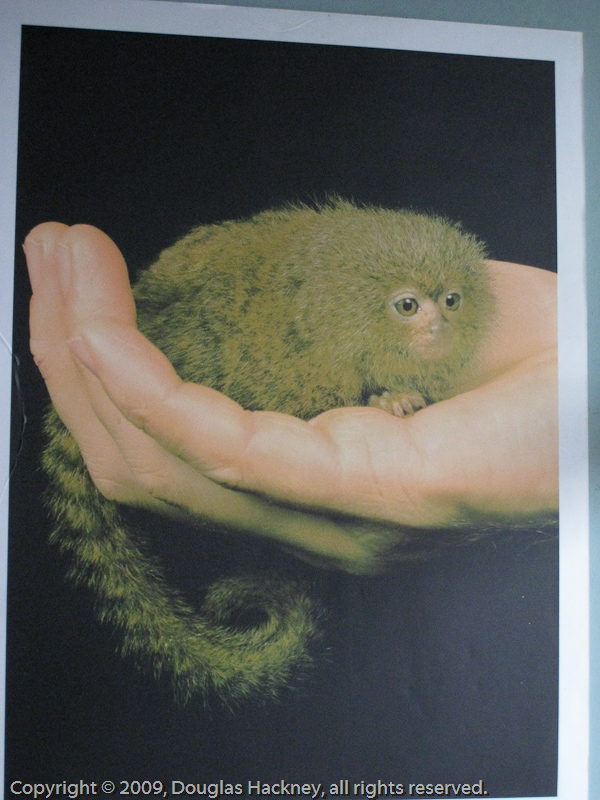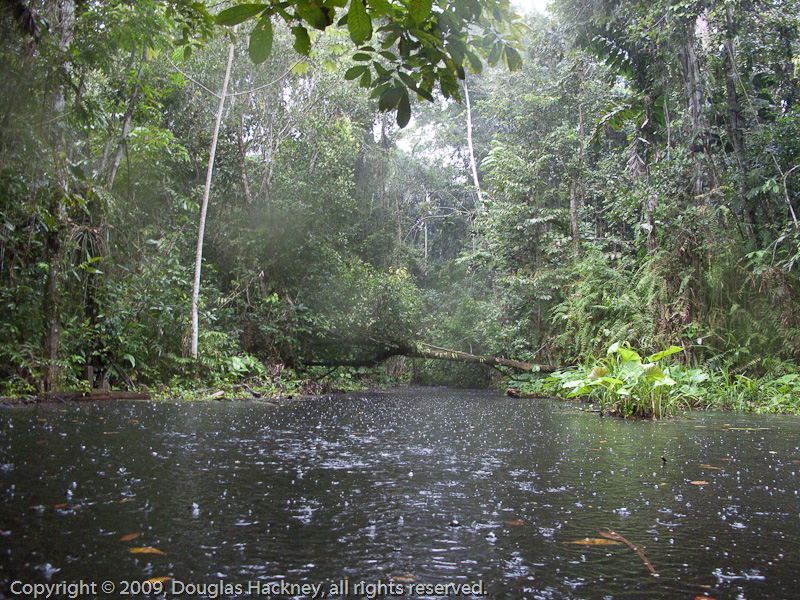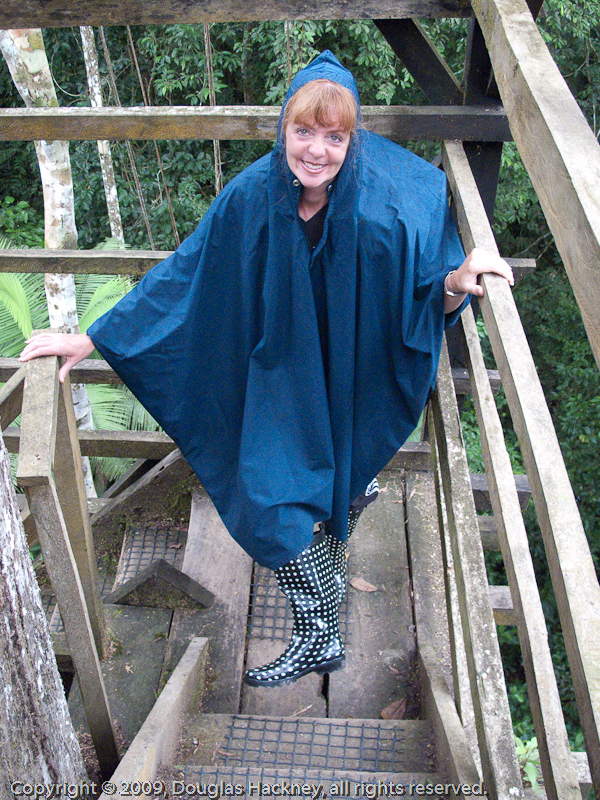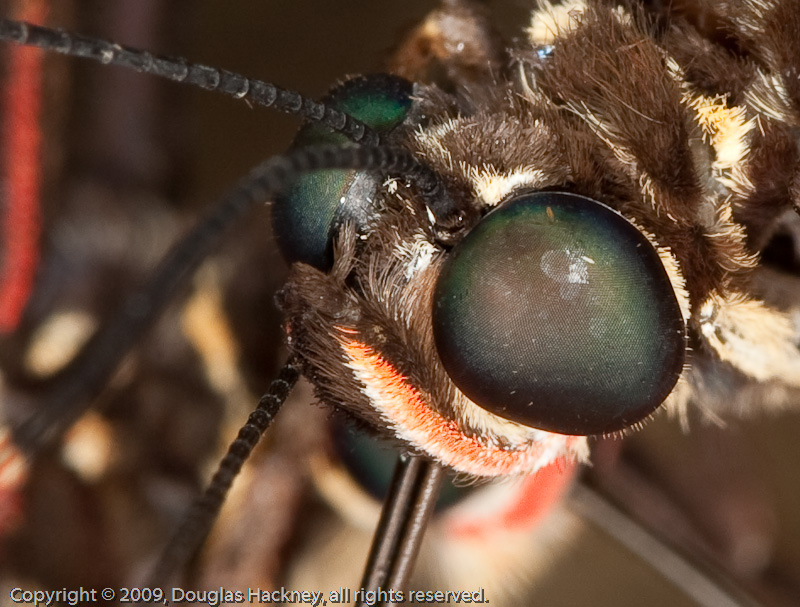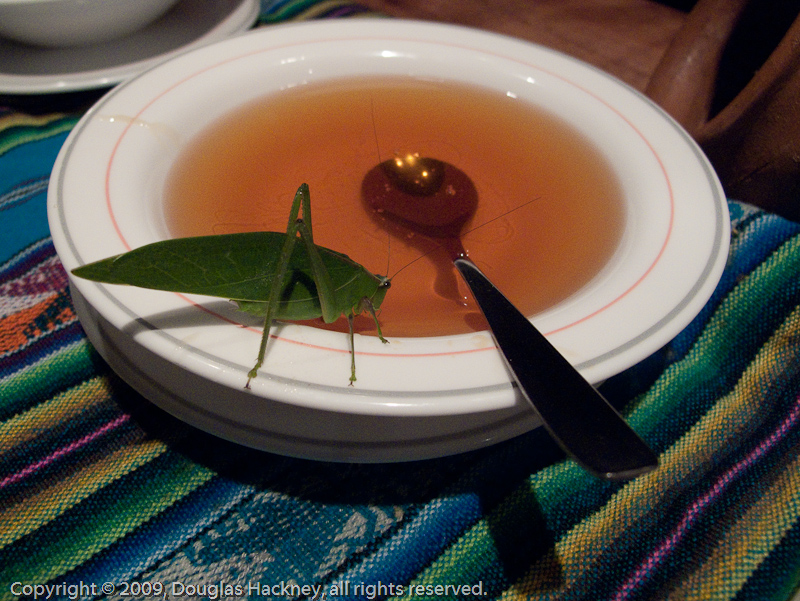If you go to the Amazon basin, here are some lessons learned.
1. If your trip includes the Galapagos, go the Amazon first. The Galapagos will ruin you for proximity to wildlife, probably for your lifetime. The Amazon is as target-rare as the Galapagos is target-rich (this refers to non-macro shooting).
2. You will have to put up with amateurs. Depending on the place you go, you will be in a group of 4 to 8 people. Unless you are on a photo expedition with other shooters, the rest of the people will be amateurs or even worse, wanna-be shooters. The tourists will snap a shot with their point and shoot and keep moving. The wanna-be shooters will shoot a few with their point and shoot, then chimp them, then make a bunch of menu changes, then shoot more, ,then chimp them, this cycle will repeat until the tiny poison frog, bat, opossum, bird, etc. is scared away. Then you will get your turn. If you want a real, dedicated shooting trip, you will need to book a solo tour or a shooter tour oriented to the time demands you need. In the meantime, keep smiling and get what you can.
3. Due to the group situation, you will not have time to deal with a tripod. Some of the birders I saw were using monopods. They would be more practical if you needed support.
4. The Amazon basin is usually cloudy. There are very few fully sunny days. You may catch a few hours of sun if you are lucky.
5. Under the canopy, it is dark. Slow shutter speeds and high ISO are required (800-1000+). If your camera produces noisy images at high ISO, consider an alternative.
6. Bring light. You will need a high power external strobe to illuminate anything under the canopy. I brought three different diffusers but only used one. The sloth shot was about 30 meters away, shooting up into the canopy, open direct strobe. The marmoset shot was about four to five meters, open direct strobe.
7. If you want birds, bring long, fast primes. Above the canopy, I shot with a 100-400L bare and with a 1.4 extender. I was unhappy with the results from both combinations. It's just too slow of a lens and not nearly as crisp as a prime. If you seriously want to shoot the birds, you need very long, very fast pro series glass. Pack them in dry bags or weather-proof shock cases. Anything shorter than 400 is not going to do you much up above the canopy unless something lands in the tree you are in or in a tree right next to the catwalk. Given the sizes of the birds, even if they are 20 meters away, you need a lot of glass. A 200 is only useful on the ground shooting up into the lower canopy if something is pretty close. For birds, unless you are coming in heavily loaded with long pro glass, you'll have a lot better time with a pair of bright, high contrast, IS binoculars.
8. While in the Galapagos zoom range is key, such as a 28-300L, in the jungle, speed is key. It is a very dark environment, even above the canopy in the clouds.
9. Your lodge or guide should provide you with heavy duty ponchos. If you are not sure of the quality, bring your own. A poncho can cover your camera bag and you. It makes a great little tent to work under with your gear in a rainforest downpour. A rain jacket is too hot when it is not raining and offers no portable tent capabilities when it is. A poncho is a lot cooler in the heat and humidity of the rain forest. Plus, you can shoot out from under the poncho.
10. Think rain. Bring, at a minimum, an inexpensive plastic sleeve for your main camera/lens combination. I used an Aquatech sports wrap because it has a separate clear hood for the strobe. The rains are hard but usually short. Sometimes it rains all day. If you want to shoot, you have to be ready with a weather sealed body, lenses and strobe(s). Bring bags that are waterproof or have an integrated weather cover.
11. Prepare for chore boots. You will wear chore boots for almost your entire time in the jungle. We brought our own because we were traveling in an overland expedition vehicle in South America. You will probably fly in. Your lodge will provide boots, but the fit can be iffy and we heard reports of leaks. if you bring your own you can get a good fit and have insoles for better support.
Steph models the latest in jungle fashion.
12. Bring DEET. Our American bug juice we keep clipped to our bags is 40% DEET. It was moderately effective. We have 100% DEET juice, but didn't have it with us out on the trail on the day we had the worst bugs. Travel fabric (quick dry) long sleeve shirts and long pants make the most sense.
13. Know your gear. Your once in a lifetime trip to the Amazon is not the time to be figuring out your camera (see the wanna-be shooter above). Test everything you plan to bring. Know how everything functions. Make sure you know all the basic functions of your strobe. Plan ahead for how you will shoot in a dark, wet environment.
14. This is a 100% humidity environment. Our lodge (Sasha) provided small "drying cabinets" in each cabin. Even with using those, our laptops got fritzy the last couple of days (they eventually booted and are OK now). Don't count on stand-alone download drives or devices. We heard of two of them dying in other groups while we were there. Bottom line: bring enough memory to last your trip, don't count on being able to reuse them after download.
15. Have appropriate drying fabrics handy. Keep your favorite lens fabric in an easily accessible pocket. Same thing for a soft cloth to dry off your body and lens(es).
16. Bring a wide brimmed hat. You will need something to keep the rare sun off and the ever-present rain out of your face.
17. Bring spare batteries. We saved one lady's trip by Steph loaning her a battery. The lady only had one and it died a couple of days into their trip. I know this sounds ridiculous, but I have seen stranger things out here.
18. Think macro. The Amazon is an amazingly rich environment for macro shooting. While large mammals are rare, reptiles shy and birds tiny and far away, there is an infinite number of insects, fungus, etc. available to shoot at macro level. Bring a macro specific, lens mounted, strobe. You will not have the opportunity to do a static setup, so practice shooting handheld (live view really helps). If I went back to the Amazon basin I would probably only bring macro gear.
19. Bring a pocket camera. There will be times when you are rigged for long glass and there is something very interesting at close range, and visa-versa. Test the high ISO performance of the pocket camera before you leave home. Existing light under the canopy is ISO 800-1000+ territory.
20. Bring plenty of strobe batteries. You will use a lot of batteries, more than you expect. It is so dark that the strobe is firing at 100% most of the time. An external battery pack is something worth considering if you are OK shooting being tethered to it.
21. Beware the side effects of anti-malarials. When you are in the black water forest, you probably won't see any mosquitoes. When you are not there you will. If you plan to take anti-malarial meds, talk with your travel doctor in detail about which types are effective in this part of the world and the side effects of each type of medication. Each one has downsides, some severe. It is a good idea to get some samples and try them for a few days to check the effects. They can induce significant personality quirks/changes/etc., as well as physical effects. Don't wait until you get to the Amazon to discover you hallucinate giant boas or turn into a bitchy grump as a side effect.
22. Be patient and understanding. You will not get every shot. Things you thought would work won't. Amateurs and wanna-be shooters will ruin shots and scare away wildlife. Things will be very wet. It can be very hot and humid. Don't beat a shot that is not working to death. Keep moving. In the Amazon, there are plenty of interesting things around the next corner.

